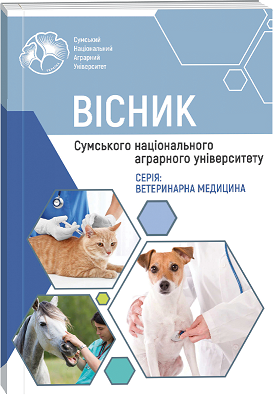BIOINORGANIC CHEMISTRY AS A SCIENCE OF HUMANITY
Abstract
Bioinorganic chemistry can be considered a kind of "bridge" between inorganic chemistry and biochemistry. The main task of BNH is to study the role of chemical elements in the emergence and development of physiological and pathological processes in the living organism. Hence the close connection of BNH with biochemistry, medicine, pharmacology, and ecology. Each of these branches of science approaches the study of BNH from its own side and uses research methods peculiar to this particular science. According to one of its founders, R.P.J. Williams, "bioinorganic chemistry today is similar to inorganic chemistry before the discovery of the Periodic Law." Indeed, despite the material accumulated so far about the role of chemical elements in the biosphere, about the participation of both simple and complex chemical compounds in vital processes, the mechanisms of action of many natural compounds have not been fully elucidated. One can only conclude that the properties of elements (oxidation degree, coordination number, etc.) inherent in them in the biosphere often differ from those that these elements exhibit in the geosphere. Biochemistry examines the regularities of the structure, distribution and transformation of chemical bonds in the process of living organisms. This means that this science, among the teachings about living things, works in many respects at the determining level of the organization of matter. Bioinorganic chemistry, as one of the branches of biochemistry, studies the structure and functional activity of complexes of metal ions with various ligands, considering the same problems, but from a different angle, since complexes of biomolecules are involved in the vast majority of processes. As an independent discipline, bioinorganic chemistry was formed in the 70s of the XX century. This science makes extensive use of insights from quantum mechanics, coordination bond chemistry, and biology. The importance of biocoordination studies was accurately emphasized by J. Wood: "If you think that biochemistry is the organic chemistry of living systems, then you are wrong, biochemistry is the coordination chemistry of living systems."
References
2. Belits Kh.-D., Hrosh V., Shyberle P. (2009). Food Chemistry. 4th revised and extended ed. SpringerVerlag Berlin Heidelberg.
3. Chi Keunh, Cheunh Bkhavbkhuti, Mekhta. M. (2015). Handbook of Food Chemistry. Springer-Verlag Berlin Heidelberg.
4. Dzhon M. de Man, Dzhon U. Finli, V. Dzheffri Kherst, Chanh Yonh Li. (2018). Principles of Food Chemistry Springer, Cham.
5. Hyryna N.P., Tumanova I.V. (2012). Praktykum z neorhanichnoi khimii: Navch. navchalnyi posibnyk vyshchykh medychnykh (farmatsevtychnykh) zakladiv I-III rivniv akredytatsii. [Workshop on inorganic chemistry: Education. study guide higher medical (pharmaceutical) institutions of I-III levels of accreditation]. Kharkiv: VSV «Medytsyna». [in Ukrainian].
6. Levitin Y. Y., Antonenko O. V., Bryzytska A. M., Vedernykova O., Neorhanichna khimiia. (2012). Laboratorni praktykumy: navch. posibnyk dlia studentiv naukovykh spivrobitnykiv farmatsii akademichnoi kafedry. [Laboratory practicums: teaching. manual for students scientist pharmacy academic department]. Kharkiv: NFaU. [in Ukrainian].
7. Levitin Y.I., Bryzytska A.M., Kliuieva R.Kh.. (2017). Zahalna ta neorhanichna khimiia : navch. dlia studentiv VNZ zakryttia navchannia. [General and inorganic chemistry: textbook. for university students education closing]. Kharkiv : NFaU [in Ukrainian].
8. Muzychenko V. P., Lutsevych D. D., Yavorska L. P. (2010). Medychna khimiia. [Medicinal chemistry]. Kharkiv: VSV "Medytsyna". [in Ukrainian].
9. Sachan A., Khendrikh S.. (2018). Food Toxicology: Current Advances and Future Challenges. Apple Academic Press
10. Slobodniuk R. Ye., Horalchuk A. B. (2018). Analitychna khimiia ta analiz kharchovykh produktiv: navchalnyi posibnyk. [Analytical chemistry and analysis of food products: a study guide]. Kharkiv: Vydavnychyi dim «Kondor». [in Ukrainian].
11. Stepanenko O. M., Raiter L. Kh., Ledovskykh V. M., Ivanov S. V. (2002). Zahalna ta neorhanichna khimiia: U 2-kh hl. [General and inorganic chemistry: U 2-kh ch.] Kharkiv: Ped. Presa, 2002. [in Ukrainian].
12. Tsvietkova L. B., Romaniuk O. P. (2006). Neorhanichna ta orhanichna khimiia: Navch. posibnyk. Rozdil II. [Inorganic and organic chemistry: Education. manual. Ch.II]. – Lviv: ‘Mahnoliia’. [in Ukrainian].
13. Tsvietkova L.B. (2007). Zahalna khimiia: teoriia ta problemy: Navch. posibnyk. Ch.I. [General chemistry: theory and problems: Study. manual. Ch.I]. – Lviv. [in Ukrainian].
14. Voronov S.A., Stetsyshyn Yu.B., Panchenko Yu.V., Vasyliev V. P. (2010). Toksykolohichna khimiia kharchovykh produktiv i kosmetychnykh zasobiv : navch. [Toxicological chemistry of food products and cosmetics: textbook]. Lviv: Vydavnytstvo Lvivskoi politekhniky. [in Ukrainian].
15. Wisconsin P.C.K. Cheung, Mehta B.M. (2015). Food Chemistry. Third Edition. Edited by Owen R. Fennema. University of WisconsinMadison, Madison, (Eds.). Handbook of Food Chemistry England.

 ISSN
ISSN  ISSN
ISSN 



